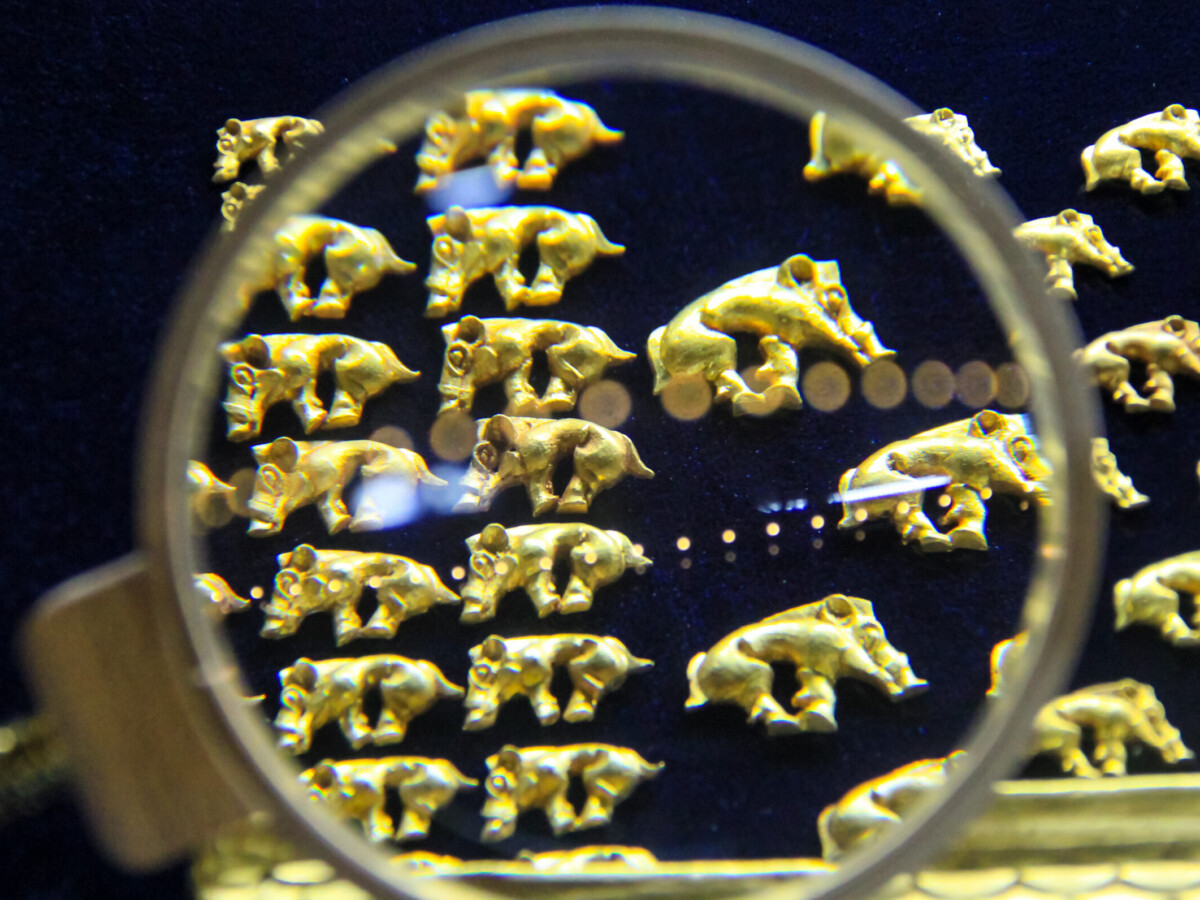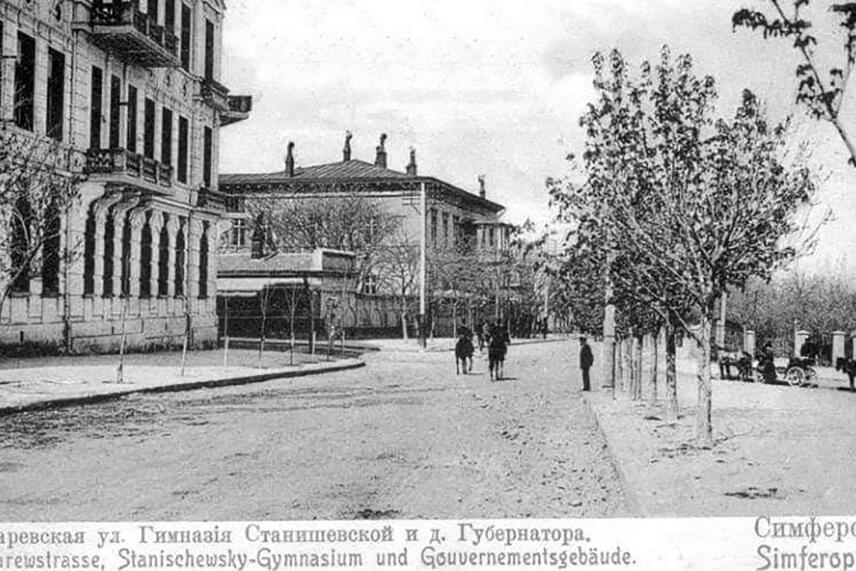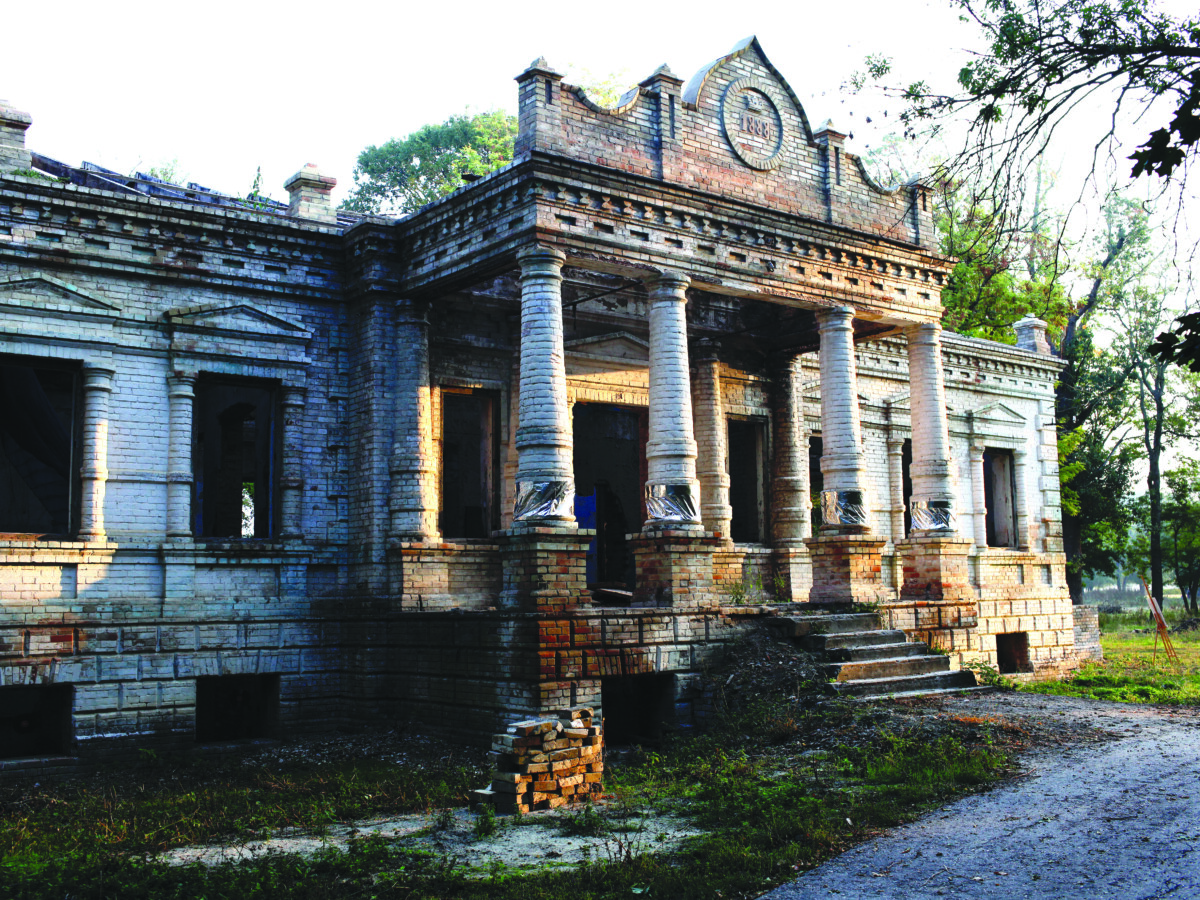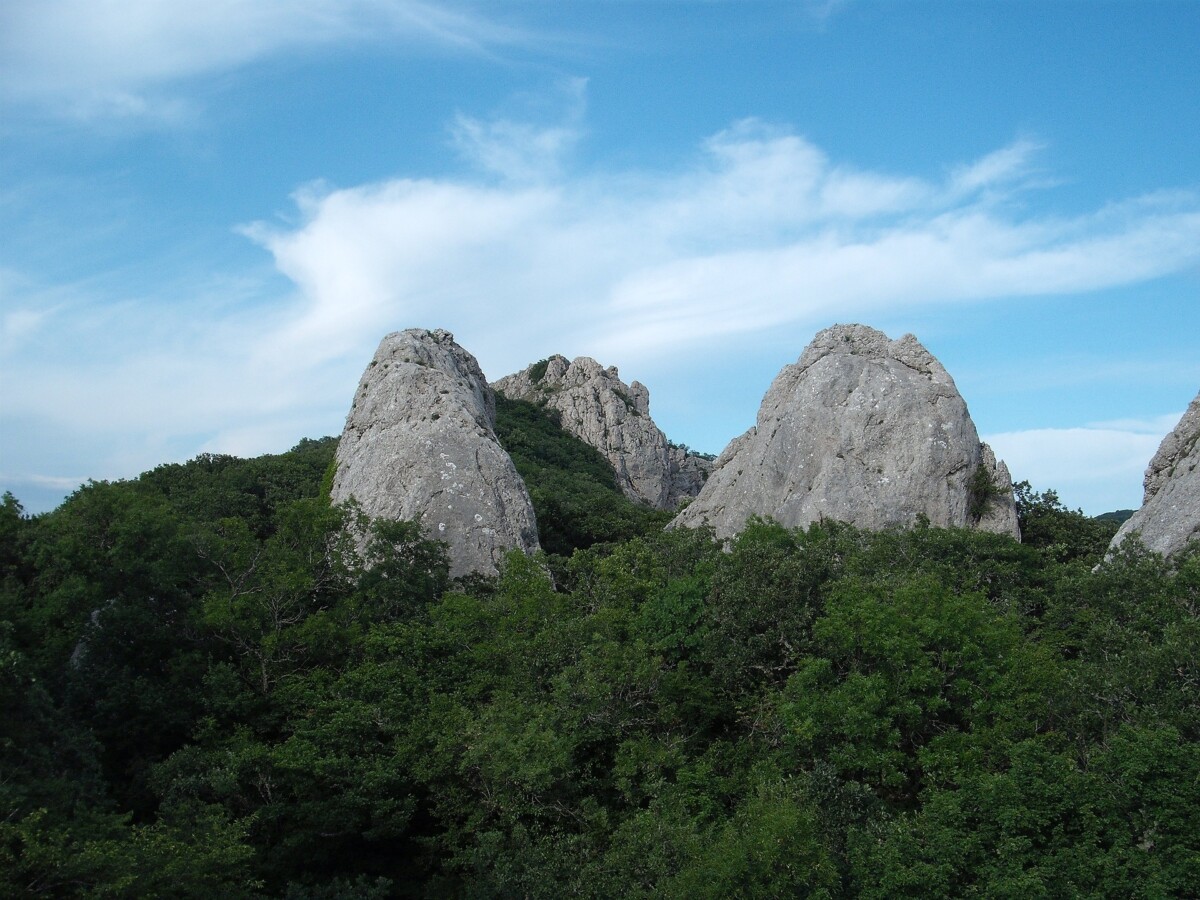“The Crimean Magazine” decided to find out which artifacts are part of the collection of the “Scythian gold” and what makes them unique.
Golden island
Title exhibits of four Crimean treasure houses of cultures located in Kerch, Simferopol, Bakhchisarai and Sevastopol became the core of the exhibition.
The name of the exhibition is “Crimea is a golden island in the Black Sea” defines very precisely the place of the peninsula as a center of cultures and civilizations of East and West. Wonderful and mostly unique artifacts discovered by archeologists clearly show the essential role Crimea played in the world trade, cultural and political processes since the earliest times.
A popular name of the exhibition, which is the “Scythian gold” is conventional for the most part. The items made of precious metals of the Scythian period occupy an important, but not major place in the exposition. To a certain extent, they are considered to be a bright background for showing of less expressive, but rather significant artifacts for the world culture.
Chinese chests

A remarkable discovery was made during the excavations of the Ust’-Alma necropolis, located on the precipitous cape near the village of Peschanoye in the Bakhchisaraiskiy District. The finding clearly demonstrates that China and Crimea was connected with each by a reliable trade route, which existed here in the antique period long before the Silk Road. Fragments of wooden chests, where women of fashion kept their jewels and perfume in, were found inside the burials of women, who lived two thousand years ago.
The chests were made of wood or pressed bamboo and cover with glace lacquer that was black on the outside with red painting in the form of geometrical ornament and orange-colored inside. The wood foundation reduced to dust, but lacquer coating layers preserved almost in their original appearance.
Such lacquer items were widely used in China in the V-I centuries B.C. The items were expensive in manufacturing process and considered to be an affiliation to nobility. Those boxes accomplished the same socially prestigious function among rich women — wealthy and noble female members of the population of the Crimean foothills in the first centuries A.D. The good preservation of artifacts allowed unique items to be fully restored.
Porcelain censer
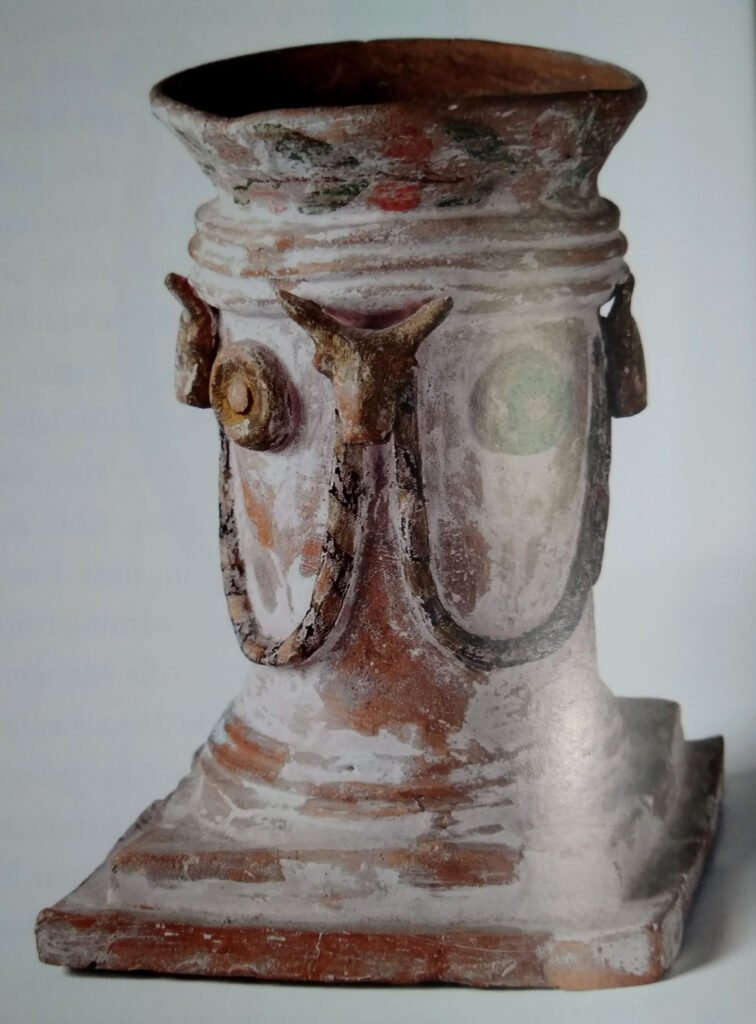
A lavishly painted censer fashioned from clay was discovered during the excavations of the ancient settlement of Scythian Neapolis in Simferopol. A mausoleum with burials of noblemen, which turned into a “calling card” of Crimean Scythia, became a remarkable discovery of the capital of ancient Scythian state. Archeologists found a skeleton belonged to a man within a unlooted tomb. He was literally strewn with gold.
Special attention of explorers was drawn to a small exquisitely crafted censer. A little bowl, where incense was burnt in, was placed at its top. It became obvious that it was a mandatory attribute required for seeing off a mighty ruler to the spirit world.
Goddess with a snake body
 A sculpture of the Goddess with a snake body is a highlight of the Kerch Museum of Antiquities. The “Father of History” Herodotus tells the legend about the origin of the Scythian nation from the marriage of Heracles and the goddess with a snake body. According to another version, this is a Sprouting maiden, symbol of the tree of life in the form of a female figure.
A sculpture of the Goddess with a snake body is a highlight of the Kerch Museum of Antiquities. The “Father of History” Herodotus tells the legend about the origin of the Scythian nation from the marriage of Heracles and the goddess with a snake body. According to another version, this is a Sprouting maiden, symbol of the tree of life in the form of a female figure.
The statue was found on the slopes of Mount Mithridat. The sculpture was made of a solid limestone block using the fret work method, which is considered to be a very difficult technology of stone carving. Judging by the preserved fragments, the statue was a part of a large significant building’s design. Probably, it was a sanctuary. The finding dates back to the Ist century A.D.
Vessels in the form of rams
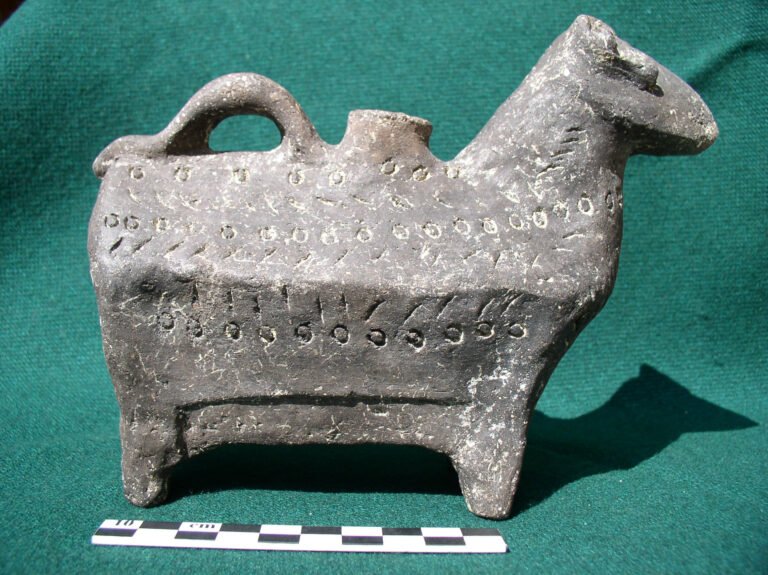
Four porcelain vessels produced in the form of ram figurines were discovered inside the burials of the Sarmatian and Alanian period (the IVth century A.D.) in the Neizats burial mound located in the Belogorskiy District. Each vessel has a bottleneck on its back used for collecting water through it and a drain hole inside their mouths. All the items possessed handles and they were decorated with ornaments.
These vessels are absolutely unique. In the first turn, their function in a funeral rite is not clear. According to one theory, Sarmatians and Alans, who were burying their tribesmen in the Foothill, saw an incarnation of god in the image of the ram.
Decree in honor of Sirisk

The decree in the honor of Sirisk, who was a historian from Tauric Chersonesus in the IIIrd century B.C., is a very significant written artifact of the Northern Black Sea region. Proceeding from the date, Sirisk can be considered to be the first scientist of our country, whose name was preserved in the pages of history.
The merits of this man of science are inscribed on a white marble memorial stone decorated with an image of a laurel wreath: he described the “apparitions of Mary”, who saved the city from barbarian attacks, relations between Chersonesus with Bosporus and other states. Sirisk was awarded a golden wreath for his works.
We will recall that when Crimea was under the rule of Ukraine in 2013 the exposition was taken to Germany and it was shown at the Allard Pierson Museum in Amsterdam, wherein the artifacts are stored to the present day. The Ukrainian authorities laid claim to the Crimean exhibits in March 2014 right after the reunification of Crimea with Russia. On 19 November 2014, four Crimean museums filed a class action lawsuit against the Allard Pierson Museum in the court of Amsterdam demanding to return the collection back to Crimea. Later, the Ministry of Culture of Ukraine got involved in the legal proceeding. At the same time, a case hearing was postponed many times for different reasons. Experts noticed that the case became political, but not legal in nature. On 26 October 2021, the Amsterdam Court of Appeal decided that the collection of the “Scythian gold” was the property of Ukraine and ruled to transfer it to Kiev. Russia has three months to challenge this decision.

